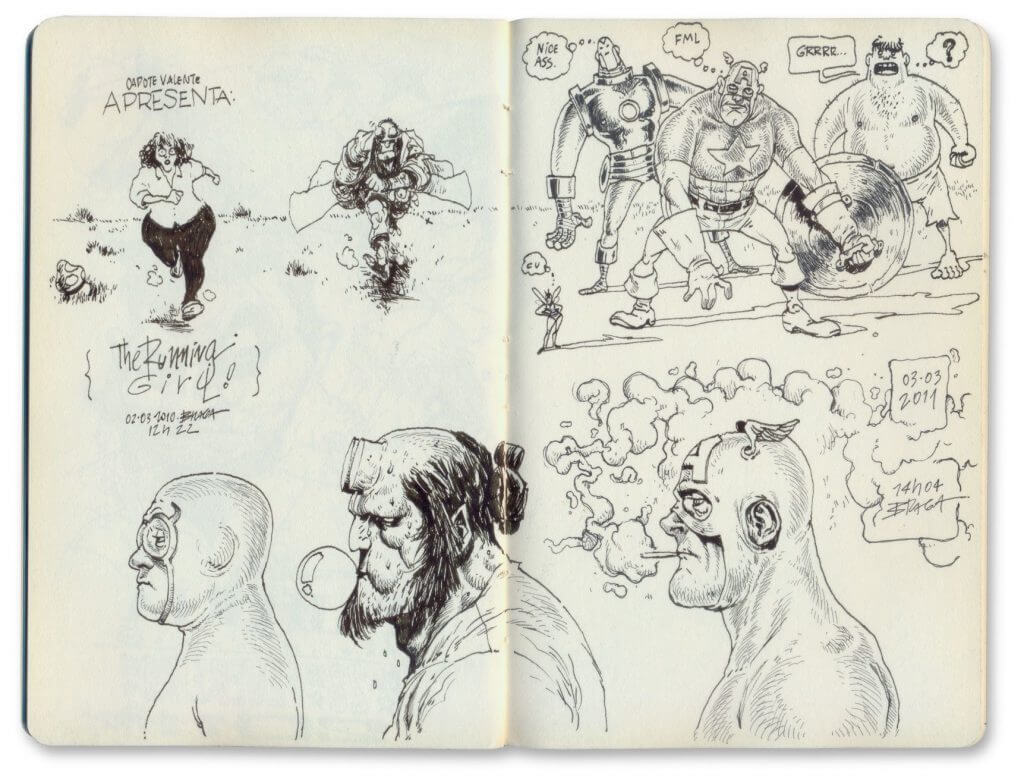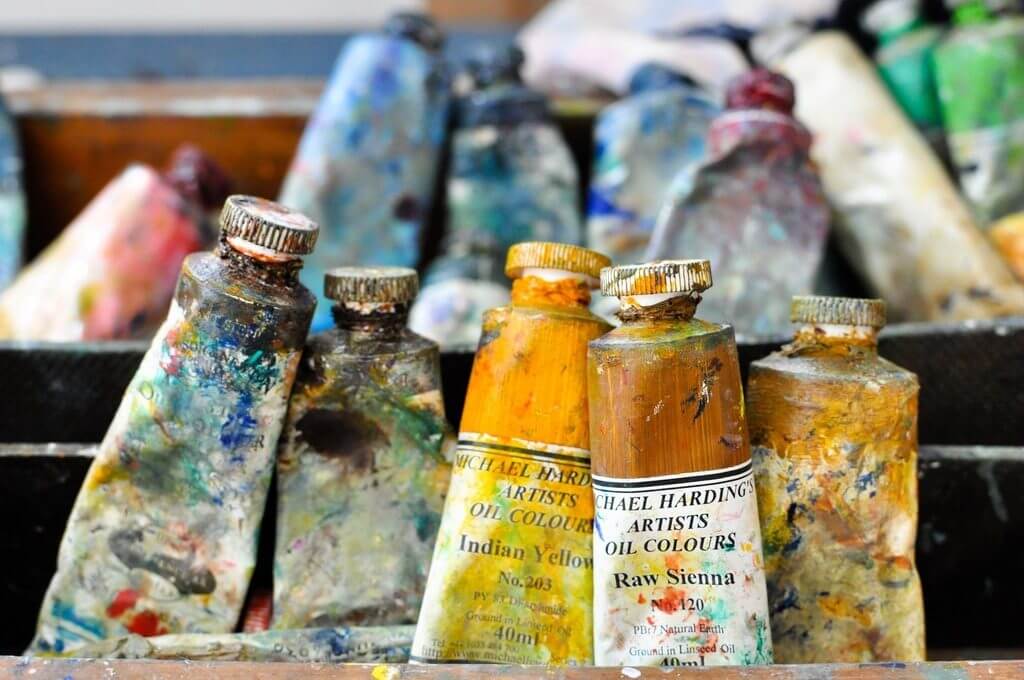Time management for artists can really help you achieve your creative goals
“The bad news is time flies. The good news is you’re the pilot.”
~ Michael Altshuler
Time management for artists can be difficult. After all, how much time should you spend on your art to get the results you want?
The truth is this:
The answer really depends on the goals you have, or where you want to go with your art and how much time you actually have to work on your art.
Try to figure out where you fit within the following two lists. This will make the rest of the article make sense and give you a guide for how much time you should be spending to achieve your goals.
To start, let’s take a look at some of the common goals for what you want to achieve with your art:
- You want to change into or get into a creative career
- You want to complete a big project like your first comic or children’s book, or portfolio
- You just want to improve your art hobby
The second part of this is how much time do you actually have to be working on your art. And that’s where time management for artists can prove to be super effective!
To keep things simple, see where you fit into one of these three categories:
- Full-time: You can work as much as possible on your art (40+ hours per week)
- Part-time: You have evenings, mornings and weekends (10-40 hours per week)
- Limited Time: You barely have any time (Less than 10 hours per week)
Now let’s break these down by outcomes and how you should approach these, depending on how much time you have each week…

Learning how to manage your time can help you be more creative
You want to change into or get into a creative career
Suggestion: Full-time.
The reason for this is that, depending on where your skills are at, you are going to need to put in a lot of effort if you want to stand out.
There are ways that can make it easier to land a job (for example, applying to local companies instead of trying to relocate). You’re also going to be spending time networking, building your portfolio, and interacting with other artists online, so all of this does add up.
Full-time: This is the best place to be and you should try and spend as much time on your art as possible.
Keep in mind that you won’t always have the luxury of spending so much time working on your art, so set yourself imaginary deadlines so you can make the most of this period of time while you can.
The danger of being in this position is that you may actually have too much time on your hands, so you really need to be focused.
If you’re at this level and you’re really serious about getting into a creative career, I would highly recommend hiring a coach to keep you on track and keep moving you forward.
Part-time: It’s still completely do-able to get or change careers when your time is limited, but you need to stay focused. Learn to say ‘No’ to things so you can spend more time on your art.
If you are having difficulties getting the time in, try working either early in the morning or late at night, when things are quiet and you can really focus.
Limited Time: It’s still possible, but the odds are against you. If you have limited time but still want to hit this goal, see what things you can prioritize in your life. Ideally, you need to move into at least the part-time level where you have 10-40 hours per week.
One of the dangers of having limited time is that you will often go for days without drawing anything. And, even if you only have just five minutes per day to work on your art, you need to be working on something every single day.
Time Management for Artists With Busy Lives
Don’t let your busy schedule get in the way of your dreams.
And if you find that you just can’t find much time to work on your art, and you’re starting to feel bad about your lack of progress…don’t give up!
Because a little time management for artists can seriously help you out here.
All you need to do is change your goal to something a little more manageable.
For example, try focusing on just one skill such as Figure Drawing while you continue to work at finding more time to dedicate to your art.
You want to complete a big project like your first comic book, children’s book, portfolio etc
Suggestion: Full-time or Part-time
The reason is this: You want to be able to build up momentum with your project. And this means doing your best to take action every single day towards completing it.
The key thing is to stay focused and not get distracted by other projects that seem interesting, but ultimately just delay you in finishing your most important project.
Full-time: Full-time is actually the best place to be for any artistic goal, but few people actually have this luxury . If this is you, here’s your chance to really make the most of it!
Set yourself goals to work towards. For example, if you were working on a children’s book, this could be finishing one page per day.
Then, continue to work each day until you finish your project. Time is a double-edged sword, because having too much of it can actually allow you to waste a lot of time on unimportant things.
That’s why setting yourself daily and weekly goals can help keep you on track and focus on the important things.
Part-time: You still have enough time to really complete some major work here. Did you know many authors dedicate just two-four hours a day to work on their writing? And that they use this schedule to continually write and publish books?
You can do the same thing. Just keep in mind that it’s best to approach these creative projects first thing in the morning. This way, you’ll have access to your most creative energy before it gets used up during the rest of the day.
Limited Time: It’s going to be tough to complete your project, but it’s still do-able! This is because creative personal projects often don’t have any deadlines attached to them other than the ones you’ve set.
Whatever you need to do, try and get yourself into a daily schedule so you can keep making a bit of progress each and every day.
As you continue to take action on your project, you may find yourself getting energized by working on it. And then, you can really justify spending more time on it.

You can use time management tools even if you just want to improve your art as a hobby
You just want to improve your art hobby
Suggestion: Limited Time or Better
The reason here is that your focus should be on the enjoyment of what you are doing.
If you feel like you are forcing yourself to put in more time, then you need to look at what you are studying and if you are actually interested in the topic.
Just because age-old wisdom is saying that you ‘should’ be studying something but you don’t feel any passion for it – be brave and just work on the things that excite you.
Full Time: Don’t let your abundance of time get in your way. Spend some time thinking about what you really want to achieve with your hobby. Then, create a plan of attack for learning and practicing the things that are most important and rewarding to you.
Part Time: If you’re in this position you may want to set yourself a bigger goal to keep working towards, such as the projects we mentioned earlier, such as your first comic book, children’s book, or completing your portfolio.
Doing this will help you keep focused and working towards something bigger – even if you’re just doing this for yourself and never have any intentions of creating art for anyone other than yourself.
Limited Time: You’re in a great spot even though you don’t have a lot of time to work on your art. Keep things fresh and always focus on what YOU want to do.
At Pencil Kings, we 100% believe that working on your art should be fun! So don’t be afraid to be silly, curious and creative 🙂
Do you have any tips on time management for artists that you’d like to share? I’d love to hear them, so feel free to leave a comment below.

Great tips. I’m one of the lucky few who can go full time art- the struggle often is as you say, focus. I tend to have ‘seasons’ for projects. The fall is for comics, summer is for study, winter for portfolio, etc.
Great to hear Ardent! Do you set hard deadlines for yourself to make sure that you are getting your projects done in a timely manner?
One thing I feel is important is, if your unable to complete a bit project within a reasonable time, set yourself smaller goals. Complete a Cover for a book, or one page of a comic, design a character or scene from a book you enjoy. Limiting yourself this way on purpose help you to visualise completing something without it being too big.
Very nice article!
It’s a relief to hear that what I already do isn’t crazy! I thought I was nuts setting up imaginary deadlines for projects where the only person involved was me. But I KNOW I’m a procrastinator and if a deadline isn’t there, well; neither is the finished project! Hehe.
Steve y: You are 100% there! If something seems too big and unmanageable, break it down into smaller pieces. VERY true!
Hey Liz, thanks so much for your feedback! Like you say, creating your own deadlines is a great way of keeping personal projects on track. And, once you’re in that mindset, you’ll find it’s much easier to hit deadlines when you’re producing work commissioned by someone else 🙂 Good luck with your art and stay tuned for more art awesomeness!
That’s really interesting! It’s a shame cause even though I’m having more “free time” I can’t find proper time to sit down and study art as I should. The worst I feel sleepy during the day sometimes so I can’t concentrate on drawing as I have to. I have college, practice other stuff but I should be drawing a long time but I’m been like a failure about studying and training drawing as I should. I’m a lazy kind of person, so it has been difficult to me to organize my life and set a time to draw. My emotional doesn’t help me either as I see my drawings and they can’t look “good and professional” for a portfolio.